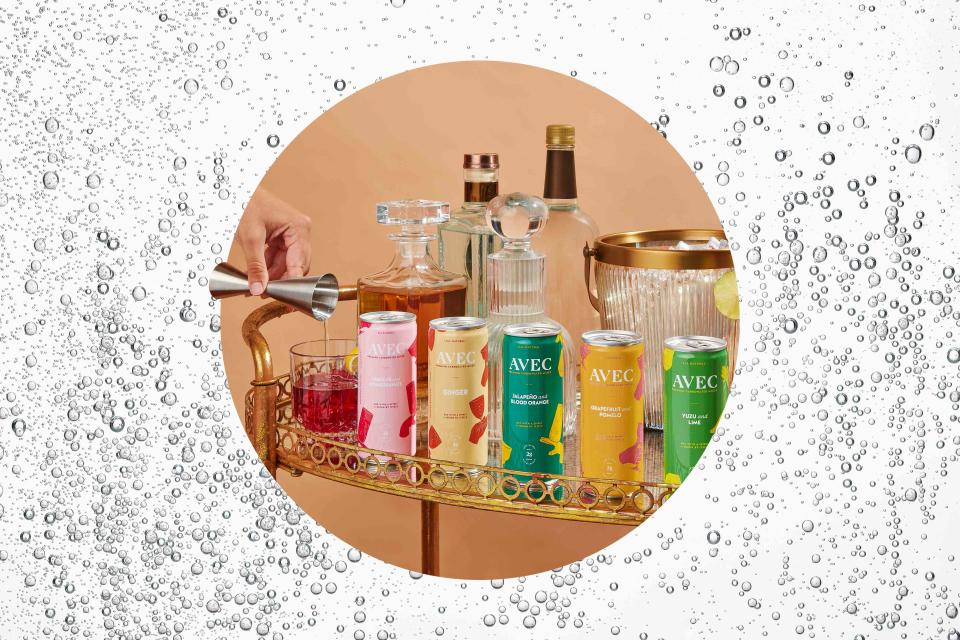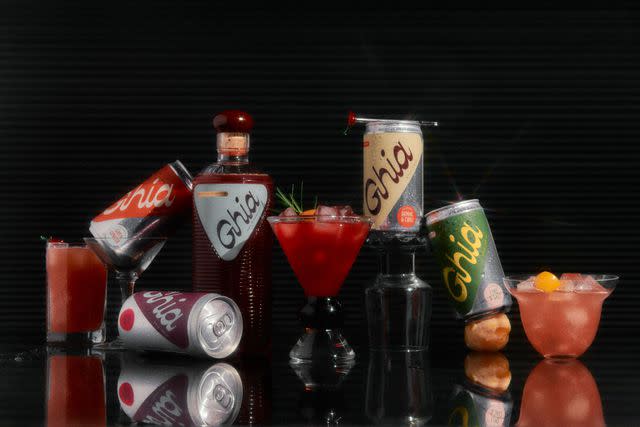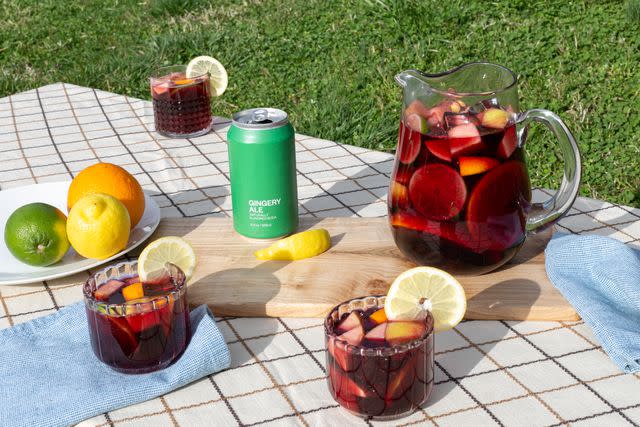A New Wave of Drinks Are Taking on Big Soda — and Winning
Why vending machines might look a lot different, a lot sooner than we think.

Avec
At Foxtrot Market, a buzzy Chicago-based grocer that dubs itself “a new kind of convenience store,” senior vice president of marketing and merchandising Laura Gardner says demand for craft sodas grew over 100% year-over-year. Functional sparkling waters — bubbly cans that tout benefits like mood, energy, hydration, and beauty — have seen 60% year-over-year growth over the same period of time.
It’s a shift that proves pop, which used to mean sickly-sweet cans in vending machines, isn’t passe or pedestrian anymore. It’s become one of the fastest-growing categories in beverages. Meanwhile, Big Soda is in a crisis.
Over the last seventeen years, there’s been an extreme drop in pop, with carbonated soft drinks sales declining every year, fueled by price increases (the cost of soda has risen 45% in the last five years), health concerns, and new, more wellness-oriented beverages. In 2015, soft drinks took another blow when many cities, like Seattle and San Francisco, implemented soda taxes to reduce the consumption of sugary beverages and lessen the burden on healthcare systems.
New sodas, new strategies
Whereas traditional soda flavors revolved around the tried-and-true, new brands are pushing flavor boundaries in favor of creative and less sugar-forward profiles. Ghia offers petite cans of zero-proof sparkling aperitifs with ingredients like sumac, ginger, and chilies. Barbet specializes in disco-hued sodas in flavors like calamansi blood orange with hot jalapeno, while United Sodas has a rainbow of offerings in flavors like toasted coconut and lemon verbena. Avec offers slim cans of yuzu-and-lime or mango-and-almond soft drinks — if you do partake, they double as mixers — and Aura Bora specializes in soda-adjacent sparkling waters in curious flavors like green bean casserole, which is both vegetal and herbal, as well as a sweet-nutty honey pumpkin soda.

Ghia
Alex Doman, co-founder of Avec, launched the brand because he realized the soft drinks served at bars contained an entire daily recommended allowance of sugar. Since debuting, the brand has doubled their revenue year-over-year, and have been adding new shelves every month — Sprouts, Target, and Wegmens were added in the last 18 months, and Whole Foods is launching shortly.
Instead of being torchbearers for obesity and tooth decay, new school sodas are aiming to fit into keto diets, solve sleep issues, and soothe gut problems. Poppi, prebiotic sodas spiked with apple cider vinegar, claim to be a natural detoxifier, and can promote weight loss and improve your skin. Olipop, a line of prebiotic sodas, supposedly encourages a healthy gut biome.
That approach seems to be working. Just six years after launching, Olipop surpassed $200 million in sales, and PepsiCo and Coca-Cola have started pursuing the better-for-you brand; earlier this month, Olipop made headlines for raising cash to meet a lofty target of $400 million in sales this year.
Doman partially attributes the growth to changing palates. “We’re moving away from sweet drinks,” he says. “When we launched a properly spicy soda, it was unusual. Now, there are tons of new flavors being brought to market, from herbaceous to bitter and everything in between.”
Simply look at the rise of savory flavors in the cocktail space for proof. In 2024, the New York Times predicted that meal-inspired cocktails would trend upwards. “The world is getting ever-smaller [with technology and connectivity] and the U.S. is becoming more diverse,” says Doman. “It’s driving new and varied flavor preferences.” To capitalize on the trend, Coca-Cola recently released a spiced option, the beverage giant’s first new flavor in years.

United Sodas
John Cassanos, food and beverage director at Tre Rivali, a Mediterranean restaurant located within the Kimpton Journeyman Hotel in Milwaukee, Wisconsin, finds the spike in soda interest is caused by a confluence of factors. “There’s the wellness movement that has been building for decades that exploded during Covid-19 and has driven demand for sodas with more natural ingredients that have the perception of being ‘better for you,’” he says. “Many people are becoming more thoughtful drinkers. They’re looking for nonalcoholic alternative choices in beer, wine, and cocktails.”
Stevan Miller, beverage director, at Esme in Chicago, agrees guests are changing their drinking habits. “The impact of the no- and low-movement can’t be ignored,” he says.
At Miller’s bar, he chooses not to purchase craft options, but to make his own soda with a Perlini system of complex carbonation. “We made an elevated pop by carbonating coconut, Madagascar vanilla, and citrus, and topped it with a decadent mushroom and miso foam.”
Other bars have followed suit, offering their own souped-up, low-sugar sodas. New York City’s Superbueno has a chamoy soda made with pickled plums, while Death & Co offers a bitter passionfruit soda.
Related: How to Use Soda to Upgrade Your Cocktail Game
Chef Nick Dugan of Sorelle finds craft sodas, particularly Casmara Club, “are best enjoyed at midnight after a busy Saturday night,” he says. “It’s a victory reward — more satisfying and thoughtful than an alcoholic counterpart.”
Are funeral bells ringing for Big Soda? “Yes and no,” says Doman. “There will always be a place for Coca-Cola in its various forms, but it is definitely seen more as a treat now.”
Gardner agrees. “As people choose traditional soda less frequently, it creates openings in their daily routines to experiment with new types of beverages that are personalized to the benefits and health goals that matter most to them,” she says. “The craft soda category is really about permissible indulgence.”
For more Food & Wine news, make sure to sign up for our newsletter!
Read the original article on Food & Wine.

